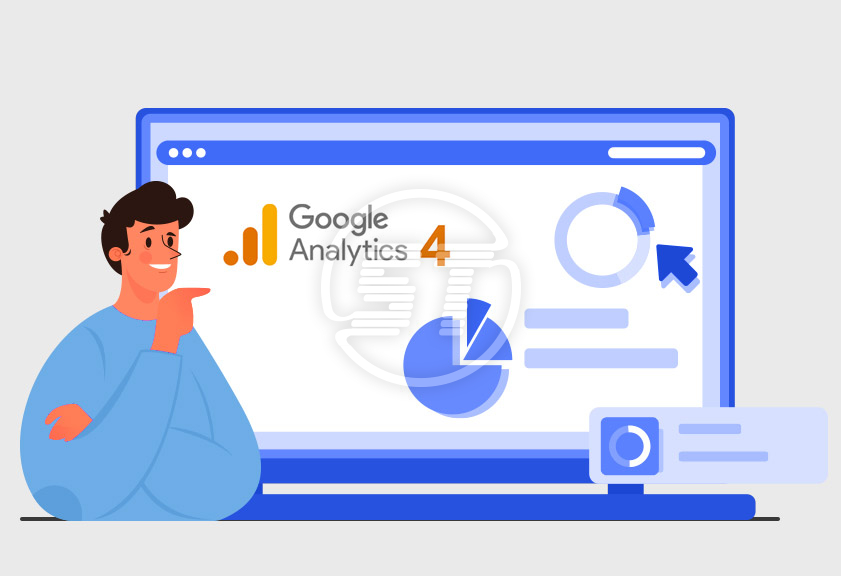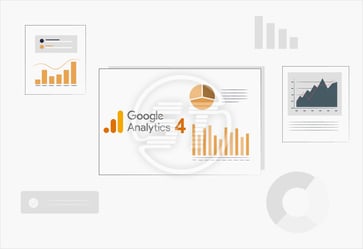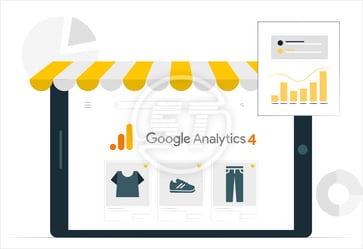Do you know, how important analytics data is for your website and online business growth?
Obviously, you know the significance of data, that is why you are here reading this article. Whatever data you receive from analytical tools is the insight how your online business is performing as compared to your competitors.
They say, “Information (data) is the oil of the 21st century and analytics is the combustion engine.” Don’t you agree with this thought?
Well, every organization has huge data chunks that decide its future. And when we are talking about websites and their data, who can understand them well other than Google.
What is your opinion on this? Do you think, Google has always been supportive with website data and performance matters?
Well, Google is helping the web world overcome website’s different problems since very beginning. It has been an amazing benefit in mapping and resolving website performance issues. For a long span now, we are using Universal Analytics (given by Google) and converting data into insights to boost traffic and conversion. But technology evolves with time and Universal Analytics also has transformed into Google Analytics 4. Find out the exact difference between Google Analytics 4 vs Universal Analytics.
Now, if the latest version is here, the websites have to start using it before the previous version will stop supporting your websites (before July 2023).
So, discover what major changes are there in Universal Analytics and what preparations you need to do for completely migrating to Google Analytics 4.
What is new with Google Analytics 4?
Google Analytics 4 is a gen-next technology with umpteen new additions. You can expect more accurate and impressive insights from GA4 (Google Analytics 4). It is a platform that is based on ‘App + Web’ system to track users across the applications, websites, and software. Basically, it helps you to know the users’ behaviour while they become your customers. Another important thing in GA4 is ‘events’; GA4 describes the presentation of data via events.
Furthermore, GA4 is made to track data even if a user opts out for cookie tracking. Do you know, Mozilla Firefox can now block Google Analytics? Also, many websites ask for users consent on cookie tracking. There are new privacy protection laws like “California Consumer Privacy Act (CCPA)” and the “General Data Protection Regulation (GDPR)”, which reduced the usefulness of Universal Analytics. But since Google Analytics 4 can track data with or without cookies, you can have the important data in every case.
Focus on user’s privacy
These days any information online is not utterly safe. Therefore, Google Analytics 4 is made to protect users’ data. GA4 comes with country-level privacy controls.
Additionally, Google Analytics 4 has a feature of customization through which you can decide who can access what data. So, only required data can be accessed by relevant teams and partners.
Insights on the complete customer journey
GA4 helps you to know complete information about customer journeys on both website and app. It combines data from both and gives you precise reports.
User’s behaviour precise prediction
Its machine learning algorithm provides you insights into what actions your users can take in the future. GA4 (Google Analytics 4) has two predictive metrics included that help you with accurate future insights. One is purchase probability and the second one is churn probability. The purchase probability lets you know the likelihood of a visitor who has visited your store will buy something in each time or not. And churn probability predicts whether the visitor will come back to your store in each time or not. When you have correct predictions, you can reach the right people with the right messages via the right channel.
Easy GA4 integration
Google Analytics 4 comes with better integration with other important Google services like Google Ads, Search Ads 360, Display & Video 360, etc. The improved integration helps you to make informed decisions to uplift the traffic and profits of your online business.
Data-driven attribution to improve the marketing efforts
GA4 is capable enough to inform you how each marketing activity is performing. Data-driven attribution finds out what contribution each interaction is bringing and how it is affecting conversion. Thereby, you can improve the digital marketing activities and focus on correct touchpoints to enhance conversions.
Get ready for Google Analytics 4 migration
To make a move from Universal Analytics to Google Analytics 4, you must make some preparations. Let’s discuss what all arrangements you need to do.
GA4 Migration Planning
Account Structure -
Measure Cross-domain sessions
Cross-domain Google Analytics sessions unification is necessary. Do it by modifying Universal Analytics snippets or updating the Google Analytics settings variable using Google Tag Manager in Universal Analytics. For GA4, you can set up cross-domain measurement via Admin page (property > data stream > Web > Tagging Settings > Configure Your Domains).
Create a property
For new property, the default property type is Google Analytics 4. The property consists of Google Analytics reports and data for a website or app. In GA4, you need to create a new property in the admin page’s property column, then click on Show advanced options and move to Create a new Google Analytics 4 property option to begin with.
Create a data stream
Create data stream creation for website or app you wish to track within a specific Google Analytics 4 property. It is a new concept in GA4. There are three types of data streams: Web, iOS, and Android.
Programmatically request and view Google Analytics reports
Use Reporting API to programmatically access reporting data from UA properties and in GA4, use Data API for this process. Access the API through existing libraries for common programming languages or straight from HTTP requests.
View related features and filters -
Remove unwanted data
Create reporting view filters to modify the data coming to your UA views. Google Analytics 4 does not have the view concept, so you create the data filters at the property level.
Transform data and maintain data hygiene
Remove irrelevant data and merge fragmented values that have the same meanings as the analytics purpose. In UA, use different filters to change data in different ways and in GA4, you can create and modify events through UI.
Exclude internal traffic
In GA4, you need to combine to settings. First, click on web data stream then access More Tagging Settings > Define Internal Traffic and then define traffic_type value based on IP address. After defining one or more traffic_type, use data filters (Admin > Data Settings > Data Filters). The data filters allow you to exclude traffic corresponding to the internal traffic_type value from the processed data capture in GA4 property.
Exclude developer/debug traffic from your final data capture
You can configure a data filter to exclude debug mode traffic in Google Analytics 4. It would be visible in DebugView.
Data Collection:
Events and Parameters
Capture a set of core user interactions in addition to pageviews
To measure custom events which imbricate with enhanced measurements, implement a custom event solution and disable the corresponding enhanced measurement events.
Take benefit from pre-defined event taxonomies and report mappings
Google Analytics 4 captures a vast range of pre-defined events and event parameters. In case of pre-defined online-sales taxonomy, GA4 uses the recommended events and parameters to populate the monetization report.
User Identity
Integrate user-level reporting through data streams and devices
GA4 provides an identity fallback resolution of user ID, Google signals, and device ID within the same reports. Web and mobile data streams in GA4 use the same data model reporting that is coordinated across the data streams. Users overlap in web and mobile can be seen through Tech > Overview report.
Occupy User ID for authenticated users
User ID serves to meaningfully unify users across the platforms/ data streams in both UA and GA4. The unified data model in web and mobile app in GA4 can offer cohesive reporting and analysis for authenticated users.
Mobile apps and Firebase
Measure Android or iOS mobile apps interactions and integrations with web data
If you are already using Google Analytics for Firebase, then you can link the Firebase project with the desired GA4 property. And if you are not using it, then create a new GA4 property and create an app data stream in that property for your app.
Data import and measurement protocol
Expand your data capture
Use data import to capture the data through gtag,js, analytics.js, or the Android and iOS SDK in Google Analytics 4.
Send data to Google Analytics from a non-web or mobile app environment through measurement protocol
Use Measurement Protocol for GA4 to directly send HTTP requests to send data to a Google Analytics property.
Property Setup:
Goals, Conversions, and Funnels
Measure a page view as a conversion
Use the goals migration tool to automatically migrate most destinations and event goals.
Measure a user interaction as a conversion
Conversion in GA4 can only be based on event names and not on other parameters. However, you can define a new event either on your site code or on UI, if the parameter has certain value, for example: page_view with specific file_location and then you can mark this new event as conversion.
Funnel visualisation for a conversion tracking process
In Google Analytics 4, funnel explorations are available for all users (free and enterprise). It is an essential data visualization technique to identify drop-off in conversion flow. Implement Google Analytics 4 ecommerce tracking with using Google Tag Manager.
Understand the flow of user interaction
The path exploration technique offers streamlined path reporting based on page title, screen class, or screen name. Remember, URL-based dimensions are not available as a configuration option for path exploration in GA4, thereby, page-level pathing relies on page title as a dimension.
Audience and Segments
Create an audience to segment users for marketing, testing, and personalization
Create, edit, and archive audiences via your GA4 property settings by defining the conditions that include users in an audience.
Remarket to website visitors
GA4 includes dynamic lookback for remarketing audiences that allows definitions of audiences based on actions not taken by users in each time.
Campaigns, channel customization, and media integration
Gain perspective on partial conversion credit by channel
The option to change the default attribution model from Cross-channel last click to Ads preferred last click is new in GA4. This setting applies to event-scoped dimensions and not user-scoped or session-scoped traffic dimensions.
Data retention and deletion
Delete data that has been collected into Google Analytics
Create a data deletion request in your GA4 property settings. It will delete all the data in a selected event or parameter for the given date range, or the data matching to the given key.
Google Ads Linking
Link Google Ads with Google Analytics to share conversion data and audiences
Link a GA4 property to one or more Google Ads accounts to view GA4 data in Google Ads, to share GA4 audiences to use for remarketing, and to populate your Google Ads campaigns into the advertising workspace.
Bid on imported Google Analytics conversion in Google Ads
To avoid double counting conversions, remove your existing UA conversions from the conversion settings within Google Ads.
Reporting:
Reporting user interface
Create Segments
Segments can be created in the Explorations workspace with the segment builder, and based on users, sessions, or events.
View performance by time-based cohorts
Cohort explorations in GA4 offer many additional important configurations. Google Analytics 4 has cohort exploration as analysis templates. You can break down the cohort by additional dimensions, such as country or user traffic source.
Build a conversion funnel
In Google Analytics 4, you can use the funnel exploration technique to build a funnel leading to any endpoint, creating a conversion funnel.
Get answers to plain language questions
In GA4, the search feature returns a wide range of aftermaths. This feature also generates links to in-built reports, links to account and property configuration pages, and links to help content.
Share reports and assets
Google Analytics 4 allows you to share a link of in-built reports, which are accessible to other users who can access the property as well. The reports can be available in CSV or PDF formats.
Custom reports and alerts
Save an in-built report that are applied to specialized configuration
It is a new and important feature in Google Analytics 4, the navigation and report customization allow users with Edit permissions to create an extremely customized reporting experience in the property.
Create customized report for each user
The unified event model and user identity integrations between web and mobile app data streams in GA4 permits your exploration to display funnel, paths, and user lifetime value in a more coordinated way to across the devices.
Use custom alerts
Set up custom insights on the Insights card to alert you via email or dashboard to make changes in data.
There are few additional tips for planning before you completely migrate to GA4.
Transition from Universal Analytics to Google Analytics 4
If you started using Universal Analytics a decade ago or so, and if you have not updated the codes (analytics.js code) from a long, then you must create a new setup for GA4 by using the gtag.js script. Once the setup will be ready for GA4, you can connect it with UA for data import.
But if you have installed the most recent version of UA using gtags, you can connect the two platforms by asking for the setup from UA to be sent over to Google Analytics 4.
(If you are not using Google Tag Manager, then you must start exploring it. Because it makes your work simpler with GA4.)
Choose what all behaviours you want to get tracked and measured in GA4
You ought to decide what behaviours you wish to measure in Google Analytics 4. For each behaviour, you must set up a new event in GA4. For example, if you wish to track shopping cart and purchase behaviours, you should create add to cart event and purchase event.
Basically, create new events based on your business model and requirements. Make a list of all behaviours you are already measuring, or you want to measure and create events accordingly in GA4.
Prepare yourself for a new system of reports and data
GA4 does not work like UA (as mentioned above). Not only the UI is different but there are a lot many differences. Though Google Analytics 4 is a bit hard to navigate, it is evolving with time and enormous changes are about to come that will surely transform the whole GA4 experience. As soon as you will learn the platform, it will be easier for you to work.
It has a library feature where you can share the reports with your team. The data which you collect using Google Tag Manager, GA4 will store that data and then generate reports using Google Data Studio.
Measuring behaviour has been made easier with Google Analytics 4. So, track and measure behaviour, get reports, and work accordingly in this new ecosystem.
Protocol for GA4 event naming
Before you migrate to GA4, you must know how to give names to events and their associated parameters. The right naming will make your transition work easier. The Google documentation says the preferred names for events should be in the lowercase text along with underscores in the place of spaces. Google depends on this format to populate data for some of the reports.
For example: email_signup, registration_success, login_error, etc.
Event parameters are more open-ended but specific such as, 'error_message' : '<<ERROR MESSAGE>>'
Tag GA4 and UA both
As soon as GA4 tracking documentation is done, start the implementation process. Tag your existing UA implementation along with your GA4 upgrade. Since you will need some time to become comfortable with new tracking and reporting, dual tagging will help you with the existing reports while you create the new ones. It also allows you to find your mistakes and brush up on your learnings for GA4. Once you feel confident about Google Analytics 4, you can completely migrate to it.
App tracking alignment
GA4 can easily combine data from both web and mobile apps. If you have an app, it must get included with the GA4 tracking process to get the overall business insights.
Derive more insights into your marketing efforts by migrating to Google Analytics 4!
This is the right time to start using Google Analytics 4 because while using GA4 you will be able to use your current UA insights as well till July 2023. That will give you time to understand and become a pro on GA4. So, when Universal Analytics will stop working, you will not face any problem with Google Analytics 4.
Modern business intelligence and scalability with increased touchpoints make Google Analytics 4 a sturdy and reliable platform for deriving insights into your business.
Establishing a baseline of your website’s performance is essential for understanding the effectiveness of your ongoing SEO and digital marketing efforts. Our team will help you to deliver every insight into the analytical part of your business by implementing the latest tools like Google Analytics 4. We offer tailor-made SEO services to give you the competitive thrust and out-hustle your business rivals in getting more qualified traffic, leads, and conversions. Get in touch with us at hello@skynettechnologies.com or submit the following request free quote form to know more.


